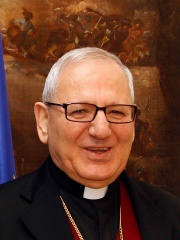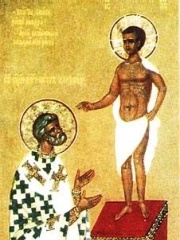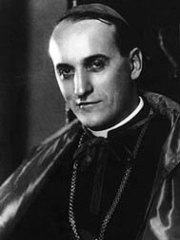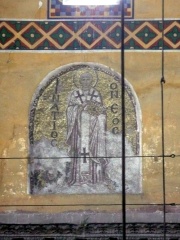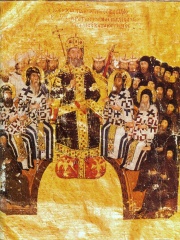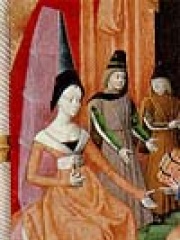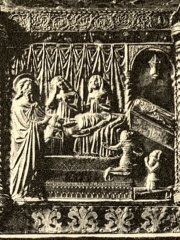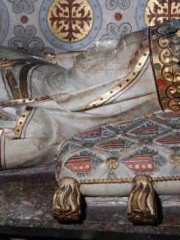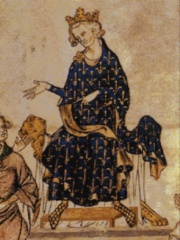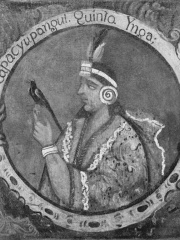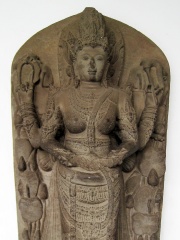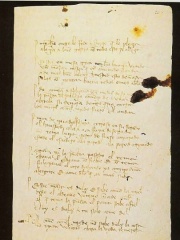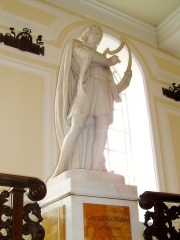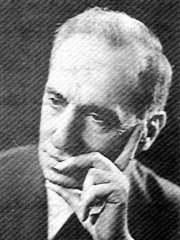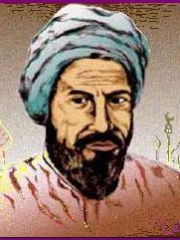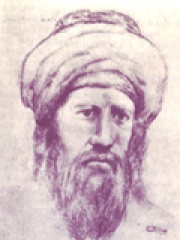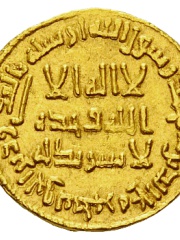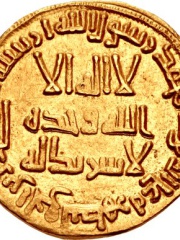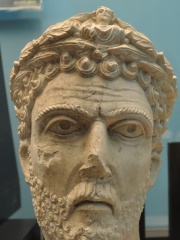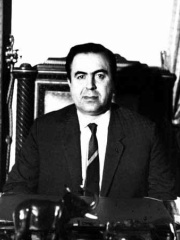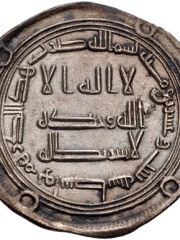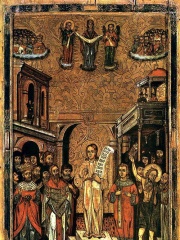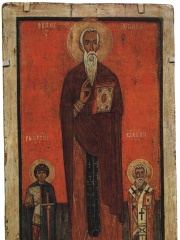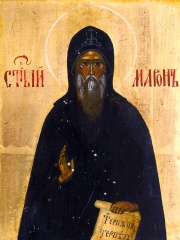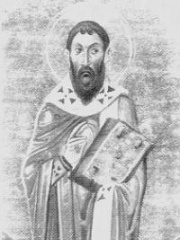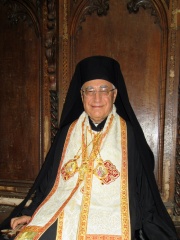RELIGIOUS FIGURE
Ibn Qayyim al-Jawziyya
1292 - 1350

 Ibn Qayyim al-Jawziyya
Ibn Qayyim al-Jawziyya
Shams ad-Dīn ʾabū ʿAbd Allāh Muḥammad ibn ʾAbī Bakr ibn ʾAyyūb az-Zurʿī ad-Dimashqī al-Ḥanbalī (29 Jan. 1292–15 Sep. 1350 CE / 691–751 AH), commonly known as Ibn Qayyim al-Jawziyyah ("The son of the principal of [the school of] Jawziyyah") or Ibn al-Qayyim ("Son of the principal"; ابن القيّم) for short, or reverentially as al-Imam Ibn al-Qayyim in Sunni tradition, was an important medieval Islamic jurisconsult, theologian, and spiritual writer. Belonging to the Hanbali school of Fiqh (Islamic Jurisprudence), of which he is regarded as "one of the most important thinkers," Ibn al-Qayyim was also the foremost disciple and student of Ibn Taymiyyah, with whom he was imprisoned in 1326 for dissenting against established tradition during Ibn Taymiyyah's famous incarceration in the Citadel of Damascus. Read more on Wikipedia
His biography is available in 30 different languages on Wikipedia (up from 28 in 2024). Ibn Qayyim al-Jawziyya is the 711th most popular religious figure (down from 491st in 2024), the 34th most popular biography from Syria (down from 19th in 2019) and the 4th most popular Syrian Religious Figure.
Ibn Qayyim al-Jawziyya is most famous for his book al-Wabil al-Sayyib min al-Kalim al-Tayyib. The book is a commentary on the famous work by the scholar Imam Al-Ghazali, Ihya Ulum al-Din.
Memorability Metrics
Page views of Ibn Qayyim al-Jawziyya by language
Among RELIGIOUS FIGURES
Among religious figures, Ibn Qayyim al-Jawziyya ranks 711 out of 3,187. Before him are Menno Simons, Louis Raphaël I Sako, Giulia Farnese, Pope Peter I of Alexandria, Ibn Hisham, and Je Tsongkhapa. After him are Evagrius Ponticus, Joseph of Cupertino, Aloysius Stepinac, Ignatios of Constantinople, Tarasios of Constantinople, and Alessandro Farnese.
Most Popular Religious Figures in Wikipedia
Go to all RankingsMenno Simons
1496 - 1561
HPI: 70.62
Rank: 705
Louis Raphaël I Sako
1948 - Present
HPI: 70.61
Rank: 706
Giulia Farnese
1474 - 1524
HPI: 70.60
Rank: 707
Pope Peter I of Alexandria
300 - 311
HPI: 70.60
Rank: 708
Ibn Hisham
701 - 833
HPI: 70.58
Rank: 709
Je Tsongkhapa
1357 - 1419
HPI: 70.56
Rank: 710
Ibn Qayyim al-Jawziyya
1292 - 1350
HPI: 70.56
Rank: 711
Evagrius Ponticus
345 - 399
HPI: 70.54
Rank: 712
Joseph of Cupertino
1603 - 1663
HPI: 70.52
Rank: 713
Aloysius Stepinac
1898 - 1960
HPI: 70.51
Rank: 714
Ignatios of Constantinople
797 - 877
HPI: 70.50
Rank: 715
Tarasios of Constantinople
730 - 806
HPI: 70.50
Rank: 716
Alessandro Farnese
1520 - 1589
HPI: 70.47
Rank: 717
Contemporaries
Among people born in 1292, Ibn Qayyim al-Jawziyya ranks 2. Before him is John VI Kantakouzenos. After him are Joan II, Countess of Burgundy, Elizabeth of Bohemia, Stephen II, Ban of Bosnia, and Elisenda of Montcada. Among people deceased in 1350, Ibn Qayyim al-Jawziyya ranks 3. Before him are Philip VI of France, and Alfonso XI of Castile. After him are Namdev, Odo IV, Duke of Burgundy, Cápac Yupanqui, Tribhuwana Wijayatunggadewi, Yoshida Kenkō, Juan Ruiz, Johannes de Muris, and Dafydd ap Gwilym.
Others Born in 1292
Go to all RankingsJohn VI Kantakouzenos
POLITICIAN
1292 - 1383
HPI: 73.89
Rank: 1
Ibn Qayyim al-Jawziyya
RELIGIOUS FIGURE
1292 - 1350
HPI: 70.56
Rank: 2
Joan II, Countess of Burgundy
POLITICIAN
1292 - 1330
HPI: 69.14
Rank: 3
Elizabeth of Bohemia
COMPANION
1292 - 1330
HPI: 66.90
Rank: 4
Stephen II, Ban of Bosnia
POLITICIAN
1292 - 1353
HPI: 66.41
Rank: 5
Elisenda of Montcada
1292 - 1364
HPI: 64.01
Rank: 6
Others Deceased in 1350
Go to all RankingsPhilip VI of France
POLITICIAN
1293 - 1350
HPI: 78.72
Rank: 1
Alfonso XI of Castile
POLITICIAN
1311 - 1350
HPI: 71.64
Rank: 2
Ibn Qayyim al-Jawziyya
RELIGIOUS FIGURE
1292 - 1350
HPI: 70.56
Rank: 3
Namdev
WRITER
1270 - 1350
HPI: 64.92
Rank: 4
Odo IV, Duke of Burgundy
POLITICIAN
1295 - 1350
HPI: 64.40
Rank: 5
Cápac Yupanqui
POLITICIAN
1320 - 1350
HPI: 63.87
Rank: 6
Tribhuwana Wijayatunggadewi
POLITICIAN
1309 - 1350
HPI: 63.78
Rank: 7
Yoshida Kenkō
WRITER
1283 - 1350
HPI: 62.93
Rank: 8
Juan Ruiz
WRITER
1283 - 1350
HPI: 60.22
Rank: 9
Johannes de Muris
MATHEMATICIAN
1290 - 1350
HPI: 59.20
Rank: 10
Dafydd ap Gwilym
WRITER
1320 - 1350
HPI: 53.34
Rank: 11
In Syria
Among people born in Syria, Ibn Qayyim al-Jawziyya ranks 34 out of 210. Before him are Michel Aflaq (1910), Ibn al-Nafis (1212), Abdul Halim Khaddam (1932), Al-Maʿarri (973), Bassel al-Assad (1962), and Amin al-Hafiz (1921). After him are Yazid II (687), Al-Walid II (706), Odaenathus (220), Nureddin al-Atassi (1929), Yazid III (701), and Romanos the Melodist (490).
Others born in Syria
Go to all RankingsMichel Aflaq
POLITICIAN
1910 - 1989
HPI: 71.42
Rank: 28
Ibn al-Nafis
PHILOSOPHER
1212 - 1289
HPI: 71.41
Rank: 29
Abdul Halim Khaddam
POLITICIAN
1932 - 2020
HPI: 70.76
Rank: 30
Al-Maʿarri
WRITER
973 - 1057
HPI: 70.73
Rank: 31
Bassel al-Assad
ENGINEER
1962 - 1994
HPI: 70.71
Rank: 32
Amin al-Hafiz
POLITICIAN
1921 - 2009
HPI: 70.60
Rank: 33
Ibn Qayyim al-Jawziyya
RELIGIOUS FIGURE
1292 - 1350
HPI: 70.56
Rank: 34
Yazid II
POLITICIAN
687 - 724
HPI: 70.55
Rank: 35
Al-Walid II
POLITICIAN
706 - 744
HPI: 70.45
Rank: 36
Odaenathus
POLITICIAN
220 - 267
HPI: 70.06
Rank: 37
Nureddin al-Atassi
POLITICIAN
1929 - 1992
HPI: 70.05
Rank: 38
Yazid III
POLITICIAN
701 - 744
HPI: 69.96
Rank: 39
Romanos the Melodist
RELIGIOUS FIGURE
490 - 556
HPI: 69.91
Rank: 40
Among RELIGIOUS FIGURES In Syria
Among religious figures born in Syria, Ibn Qayyim al-Jawziyya ranks 4. Before him are Pope Gregory III (700), Pope Anicetus (70), and John Climacus (579). After him are Romanos the Melodist (490), Émile Benveniste (1902), Ananias of Damascus (100), Maron (301), Apollinaris of Laodicea (310), Sophronius of Jerusalem (560), Youssef Absi (1946), and Gregory Peter XX Ghabroyan (1934).
Pope Gregory III
700 - 741
HPI: 79.99
Rank: 1
Pope Anicetus
70 - 168
HPI: 77.69
Rank: 2
John Climacus
579 - 649
HPI: 73.89
Rank: 3
Ibn Qayyim al-Jawziyya
1292 - 1350
HPI: 70.56
Rank: 4
Romanos the Melodist
490 - 556
HPI: 69.91
Rank: 5
Émile Benveniste
1902 - 1976
HPI: 69.73
Rank: 6
Ananias of Damascus
100 - 100
HPI: 69.72
Rank: 7
Maron
301 - 410
HPI: 68.60
Rank: 8
Apollinaris of Laodicea
310 - 390
HPI: 67.99
Rank: 9
Sophronius of Jerusalem
560 - 638
HPI: 66.98
Rank: 10
Youssef Absi
1946 - Present
HPI: 65.92
Rank: 11
Gregory Peter XX Ghabroyan
1934 - 2021
HPI: 64.25
Rank: 12

